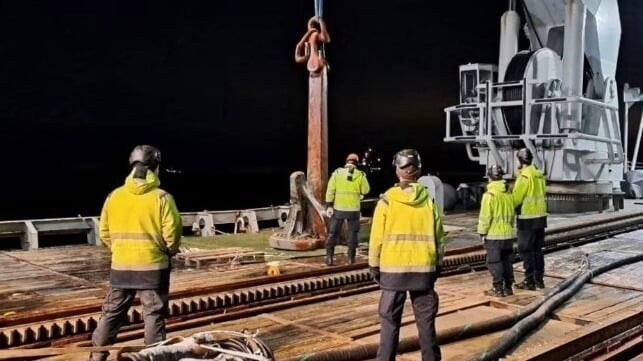Finland Says Odds of Accidental Subsea Cable Damage "Extremely Unlikely"

Despite U.S. intelligence leaks that suggest that recent cable-cutting incidents in the Baltic may be accidental, Finland's foreign minister says that it is "extremely unlikely" that four cable-damage incidents could happen in one region in a year without some amount of intent.
Finnish police continue to investigate the Russia-linked "shadow fleet" tanker Eagle S in connection with the cable-cutting incident on the Baltic seabed on Christmas Day. After leaving the Russian port of Ust-Luga, the Eagle S dragged her anchor through several subsea comms cables and the Estlink 2 power cable, severing them all. The vessel was boarded, detained and diverted to an anchorage off Porvoo, where it remains.
The UAE-based owner of the Eagle S filed suit in Finnish courts to secure the ship's release, but lost at the district court level. On Tuesday, the Helsinki Court of Appeal refused to hear an appeal of the earlier ruling - leaving the ship in Finnish police custody, at least for now.
The Eagle S casualty marked the third time in 15 months that a vessel bound to or from Russia had dredged up subsea cables in the Baltic with an anchor, following the casualties involving the Newnew Polar Bear and the Yi Peng 3. A vessel involved in the fourth and latest cable-damage incident, the Vezhen, was released this week after Swedish investigators concluded that the crew had not intentionally released the anchor.
The owner of Eagle S maintains that - like the case of the Vezhen - the Christmas Day incident was accidental. Leaked reports of U.S. and European intelligence assessments suggest that NATO governments concur.
This week, Finnish foreign minister Elina Valtonen told The Times that despite these secret Western assessments, it is "extremely unlikely" that all of the recent casualties were caused accidentally - and that even if Eagle S' contribution to the growing tally of damage was an accident, it would still demonstrate the casualty risk created by substandard Russia-linked tankers. Unlike the other three vessels implicated in recent cable-cutting incidents in the Baltic, Eagle S is an identified member of the Russian "shadow fleet," and has an extensive record of inspection deficiencies.
"We Finns, we rarely believe in things. We like to investigate and work based on facts," she told The Times. "But what is for certain is that Russia’s shadow fleet does pose a significant threat . . . If you navigate using rusty vessels, perhaps with staff who haven’t too much experience, you might run into trouble."
Vilkonenn called for efforts to keep the Russian shadow fleet "in check" to reduce risk of damage to the Baltic's environment and infrastructure - within the bounds of international law and the universal right to freedom of navigation. On Wednesday, Denmark announced such an effort: it is starting a targeted port state control inspection regime for "shadow fleet" tankers that anchor in Danish waters.
